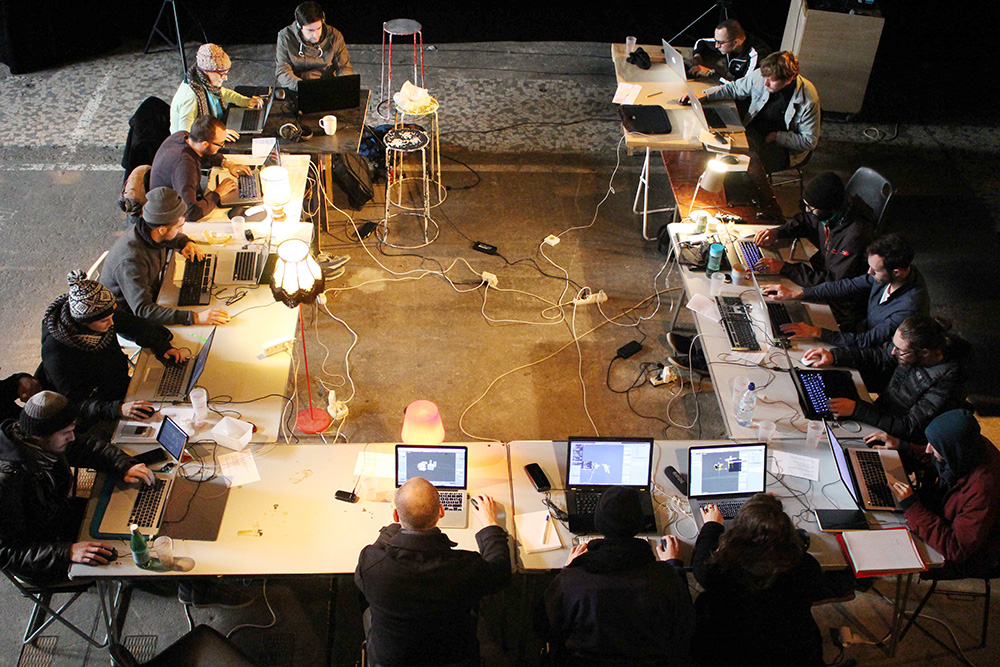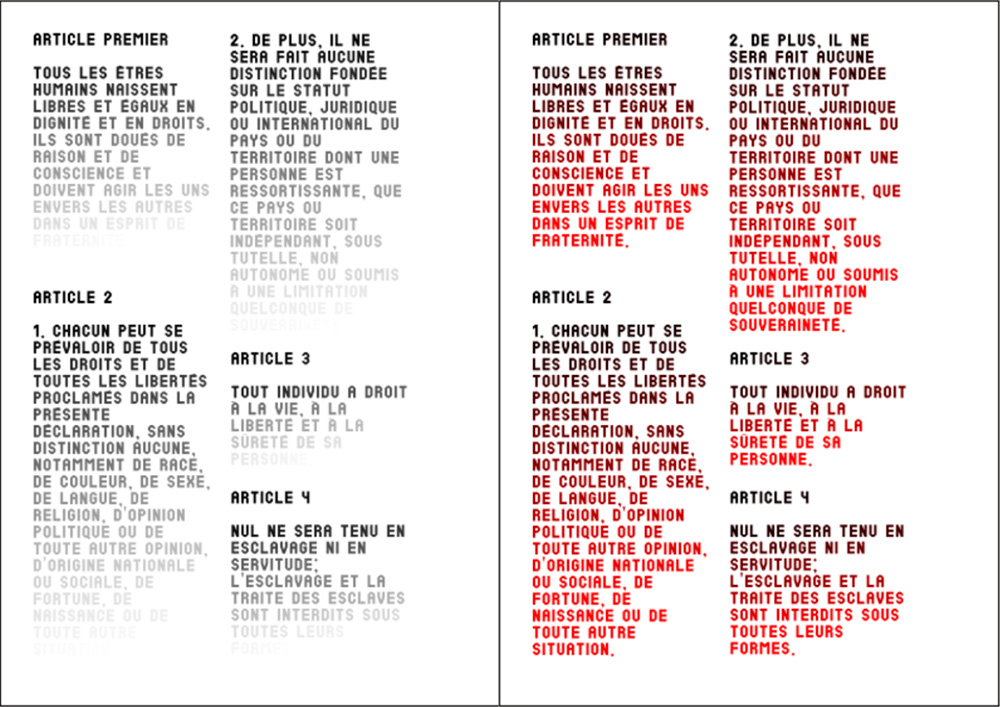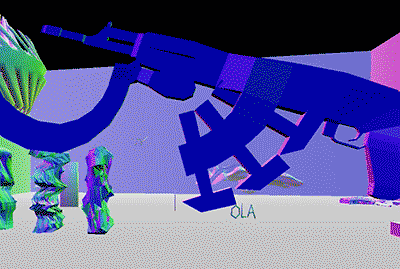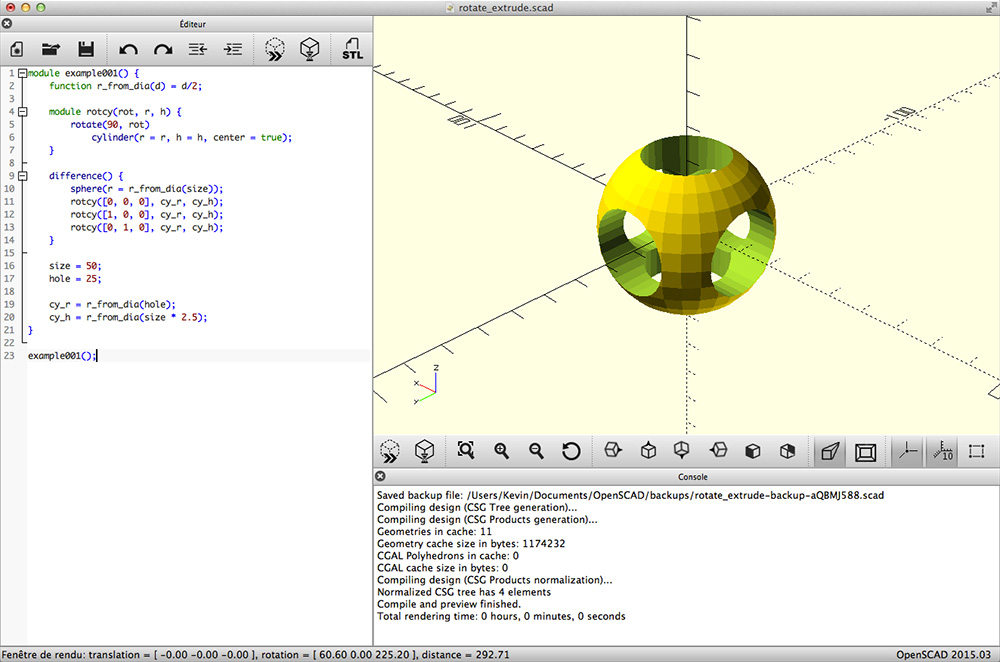Is it possible to do graphic design with free license software? What are the challenges and opportunities involved in this kind of approach? To answer such questions, we met with the Outils Libres Alternatifs (“Alternative Free Tools”) organization, whose purpose is to promote the principles of F/LOSS in the field of design.
Back Office Hello OLA, who exactly are you?
O L A We (Raphaël Bastide, Sarah Garcin and Bachir Soussi Chiadmi) all wear two hats: we are designers and developers, either at the g.u.i. Studio or as freelancers. Our day-to-day activities entail a lot of programming so inevitably we became involved in the free software culture that is so much a part of the scene. The use of “alternative” tools has seemed like an especially rich area of exploration for us, with its methodologies that encourage collaborative work and experience sharing. In order to promote a wider public awareness of these issues, we founded the OLA Association in 2014. , October 2015.Outils Libres Alternatifs)
, October 2015.Outils Libres Alternatifs)
B O Why do you want to work with “alternative tools” instead of the Adobe software which most designers use?
O L A The history of computer science shows that the challenges are already old. In the early 1980s, Richard Stallman, a developer at MIT, was advocating the free circulation of information coming from the hacker movement. One day, he realized that his Xerox printer was not sending him any error messages when the paper jammed. When he tried to modify this himself, he saw that the source code of the printing program was “closed” by the editor. Frustrated by these limitations, in 1983 he embarked on the GNU (“GNU’s Not Unix”) project, the creation of an operating system whose source code was open and could thus be altered at will. Consequently everyone can easily understand the technical operation of his OS, configure it, and alter it any way they want. These days, with the hegemony of Adobe, it seems to us that most artists and designers are in the same situation as Stallman in his day. By using the same proprietary creative software packages, they find themselves confronted with pre-established interfaces and functions, determined by the editor, and are unable to alter them. We created the OLA organization to promote alternatives.
B O Is there a form of social involvement inherent in this approach?
O L A For us, using free software is part of a more open society, with an eye to respect for everyone’s freedoms. Our approach tallies with the definition given by Ivan Illich [a critic of industrial society] of the “user-friendly tool,” 11 Ivan Illich, Tools for conviality (New York: Harper & Row, 1973), 13. which, in his book, must meet three requirements: it must give rise to efficiency without adversely affecting personal autonomy; it must create neither slaves nor masters; and it must broaden the radius of personal action. 22 Ibid., 23. However, these social challenges are not the OLA’s only focus; by using these “alternative tools,” it has the wider aim of renewing the output possible with computers.
B O What specific initiatives are you engaged in?
O L A For many years we have been wondering how to raise awareness about such issues, and what publics would potentially be interested. Was it important to create a presence within schools of art and design, or become associated with them? Getting participants to pay? Requiring technical prerequisites? Should we organize events ourselves or get outside people to do so? For the time being we’ve conceived a type of workshop which is accessible to everyone (professionals, students, teachers, hackers, etc.), and free for association members. Each event is organized around a free software package, and we invite people to discover it through individual and collective productions. Speed talks, which are short presentations of projects outside the workshop, galvanize and punctuate the workshops. Each workshop is a forum for discussion and shared learning, and we have gradually formed a curious and critical community who have come together around the “tangible utopia” 33 Sébastien Broca, Utopie du logiciel libre: Du bricolage informatique à la réinvention sociale (Neuvy-en-Champagne: Le Passager Clandestin, 2013). of free software. OLA is a fully-fledged part of the movement that is supported by other initiatives such as the April Association, 44 “Non-profit association devoted to promoting and protecting free software.” http://www.april.org La Quadrature du Net, 55 “Non-profit association that defends the rightsand freedoms of citizens on the Internet.” http://b-o.fr/quadrature and the Open Source Publishing Collective. 66 OSP is a collective of graphic designers who only work with free software. http://osp.kitchen One of our main challenges is to ferret out the extremely rare French-speaking artists and designers who use free software and want to share their activities.
B O What were the themes of the workshops? How do you describe what they produce?
O L A Three two-day workshops have already taken place at La Générale, 77 http://www.lagenerale.fr a creative center in the 11th arrondissement in Paris. The first workshop, called “Experimenting With Free Publication [OLA#0—Expérimenter l’édition libre]” (May 2015), was devoted to Scribus, a free software DTP package. Those taking part worked around the theme “Using, Modifying, Disseminating [Utiliser, Modifier, Diffuser],” with the help of Aurélie Delafon, editorial secretary and layout artist at the now-defunct magazine Le Tigre—produced entirely with Scribus. That workshop gave rise to the production of a printed document that included all the contributions. The second workshop, “Experimenting With Free 3D [OLA#1—Expérimenter la 3D libre]” (October 2015), run by Aby Batti (a game designer and co-founder of the SharpSense independent video game studio), suggested modelling imaginary objects with the help of the free software Blender. The output of the workshop 88 http://b-o.fr/restitution took the form of an online 3D space (WebGL), which could be directly explored with a Web browser to discover everyone’s projects.
That workshop gave rise to the production of a printed document that included all the contributions. The second workshop, “Experimenting With Free 3D [OLA#1—Expérimenter la 3D libre]” (October 2015), run by Aby Batti (a game designer and co-founder of the SharpSense independent video game studio), suggested modelling imaginary objects with the help of the free software Blender. The output of the workshop 88 http://b-o.fr/restitution took the form of an online 3D space (WebGL), which could be directly explored with a Web browser to discover everyone’s projects. The third, “Experimenting with Pure Data [OLA#2—Expérimenter Pure Data]” (July 2015) was dedicated to the creation of a digital and physical musical instrument.
The third, “Experimenting with Pure Data [OLA#2—Expérimenter Pure Data]” (July 2015) was dedicated to the creation of a digital and physical musical instrument.
B O Why did you choose short forms of transmission (two days), on “neutral ground,” rather than a longer-term intervention within existing schools?
O L A The workshop format offers complete involvement in a particular activity, in a time frame set up in advance, which provides an intense experience that isn’t watered down. The short period of time enables us to fit in with the busy schedules of those taking part, people who are rarely free for several days running. We’re in the business of “doing” and “making,” because all three of us have a production culture which borrows a lot from hacker culture: social involvement, the pace of distribution (“release early, release often”), and knowledge swaps. What’s more,La Générale, which has accommodated the OLA workshops up until now, is far from “neutral ground.” This artistic, political and social cooperative is a socially engaged place, whose commitment tallies with our own philosophy. The three of us are also art school teachers, where we make our students aware of free software packages.
B O You claim that you also want to raise awareness among professionals. Do you think these workshops can influence their activities, whereas the software systems presented are not necessarily the most productive (!), and are always the brainchildren of amateurs?
O L A One of OLA’s first ideas was to invite professionals who use free software in their everyday creative work. They show us, for example, that it’s possible to produce [professional documents] with this kind of tool. Some free software packages are, to be sure, less effective than their proprietary competitor’s, but this isn’t true in most cases. In addition, their user paradigm isn’t the same: on the one hand, some software packages see themselves as universal (you can, so to speak, do everything with them), but they conceal their internal architecture, whereas where free software is concerned, it forms a rich and varied ecosystem with endless permutations. Free software packages are more specific and are designed for simple, specialized tasks. The mirage of the “creative super-tool” is replaced by the ongoing reinvention of production tools, which enables creative renewal. In other respects, free software packages are rarely the brainchildren of amateurs—because you need a minimum of technical skills—but are developed by professionals in their free time, or funded by companies. So everyone is free, on a case-by-case basis, to choose the tool that best suits them. The essential thing is to have a choice.
The mirage of the “creative super-tool” is replaced by the ongoing reinvention of production tools, which enables creative renewal. In other respects, free software packages are rarely the brainchildren of amateurs—because you need a minimum of technical skills—but are developed by professionals in their free time, or funded by companies. So everyone is free, on a case-by-case basis, to choose the tool that best suits them. The essential thing is to have a choice.
B O Aren’t you afraid that the very broad spectrum of software packages presented (graphic work printed with Scribus, 3D modeling with Blender, sound design with Pure Data) only offers a brief and relatively technical glimpse of the tools? Have participants’ activities changed?
O L A We don’t present software, rather we introduce the personal and artistic activities of the people we invite. These are activities with which participants are experimenting. We don’t have any goals involving levels of technical tool mastery. Our aim is discovery and experimentation. This is why we attach a great deal of importance to the outcome. What participants remember is peculiar to each individual person, and the feedback is positive.
B O In the long term, and in view of your economic model, how will you find time to organize these free events? How will you bring a wider community together, and turn that corner?
O L A We have a well-balanced economic model based on voluntary work and membership. We organize these workshops for the pleasure of it, and for the social commitment they represent. Like developers of free software, we do this in our free time, out of passion, and for the thrill of discovering new tools. What’s more, institutions are working with us in this approach. For example, La Générale has provided us with a venue, and the Synesthésie Art Center in Saint-Denis, near Paris, will fund three OLA workshops in 2016–2017. This will enable us to invite people from outside the Paris region, and pay them. The association is young, and still growing.